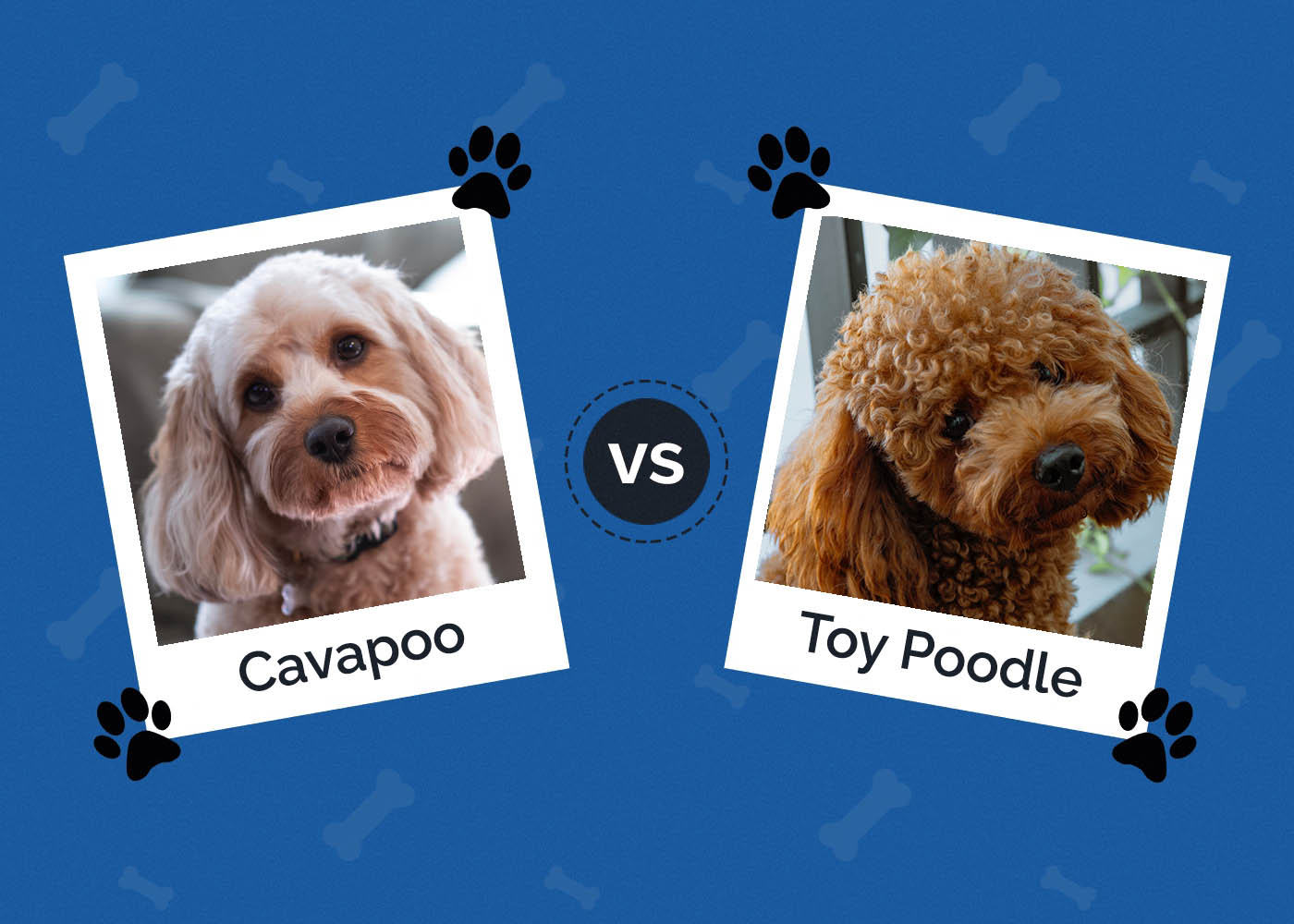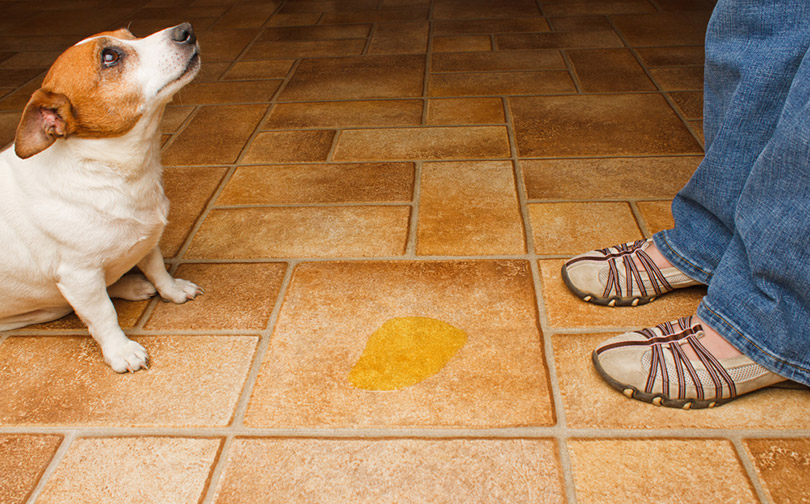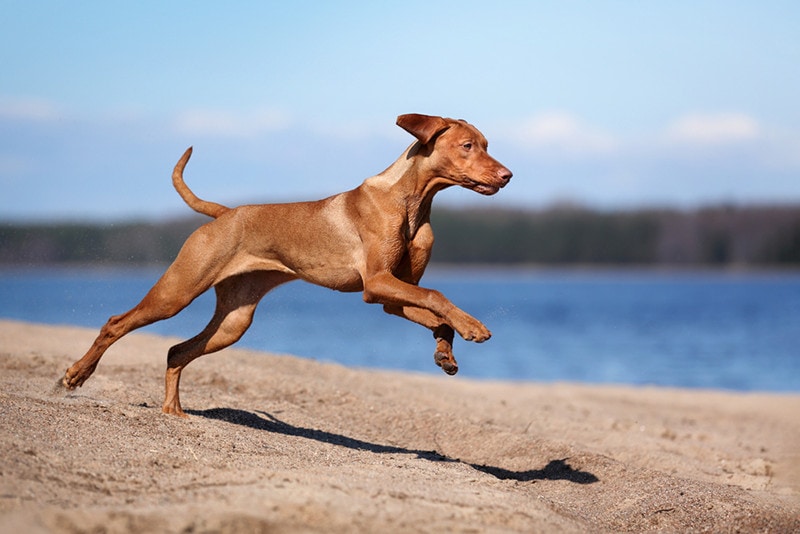Red Pomeranian: Facts, Origin & History (With Pictures)
By Kit Copson
Updated on
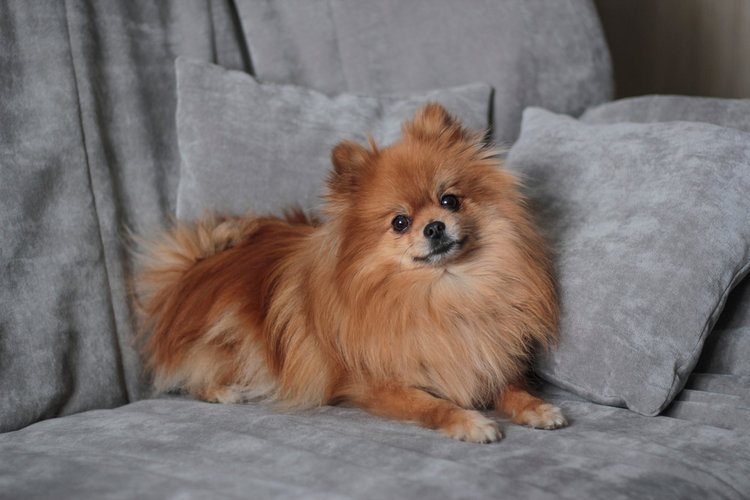
The small but spunky Pomeranian is a toy breed, yet never short on character. This breed is also a real mixed bag when it comes to coat colors and markings. The American Kennel Club lists 18 standard Pomeranian coat colors, the most common of these being orange and red.
This doesn’t come as a surprise, since many of the Pomeranians we see out and about are deep red in color, whereas other colors, like lavender, beaver, and blue, are far rarer. Aesthetics aside, the red Pomeranian (and, indeed, Pomeranians in any color) has a history well worth knowing about. If you’re curious to know more, let’s head over to the Arctic where the Pomeranian’s roots lie.
The Earliest Records of Red Pomeranians in History
The Pomeranian’s ancestors were Spitz dogs that were bred as sled-pullers, protectors, and herders in the Arctic, though the breed’s name comes from the historical region of Pomerania which today makes up part of two countries—Poland and Germany to the west. This was where the Pomeranian’s development began hundreds of years ago.
The Pomeranian is a member of a specific Spitz-type subgroup referred to as the German Spitz group. Pomeranians are the smallest dogs out of the five possible German Spitz sizes. The German Spitz is thought to be Central Europe’s oldest breed.
Pomeranians were first referenced in British literature in 1760 but were developed sometime before the 16th century. Though it’s not clear when the Pomeranian’s development began, famous owners have included Martin Luther and likely Michelangelo, which indicates that they must have been around for quite some time. The 16th-century Pomeranian would have been larger than the Pomeranian we know today, however.
How Red Pomeranians Gained Popularity
Pomeranians have long been popular with royalty. In 1767, Queen Charlotte entered England with two Pomeranians that became the subject of Sir Thomas Gainsborough’s artwork. At the time, Pomeranians were still bigger and heavier than they are today, though many of the traits we know today were already present, particularly the curly tail and distinctive coat type.
The Prince of Wales also owned a Pomeranian named “Fino”—a dog he had painted in 1791. Later on, Queen Victoria developed a strong affinity for the breed, and they soon became her beloved companions, which gave the Pomeranian’s popularity a massive boost.
Queen Victoria went on to breed and show her Pomeranians, notably at Crufts in 1891 when one of her Pomeranians was awarded first place, which only served to enhance their stardom. She was also responsible for further downsizing Pomeranians to toy size.
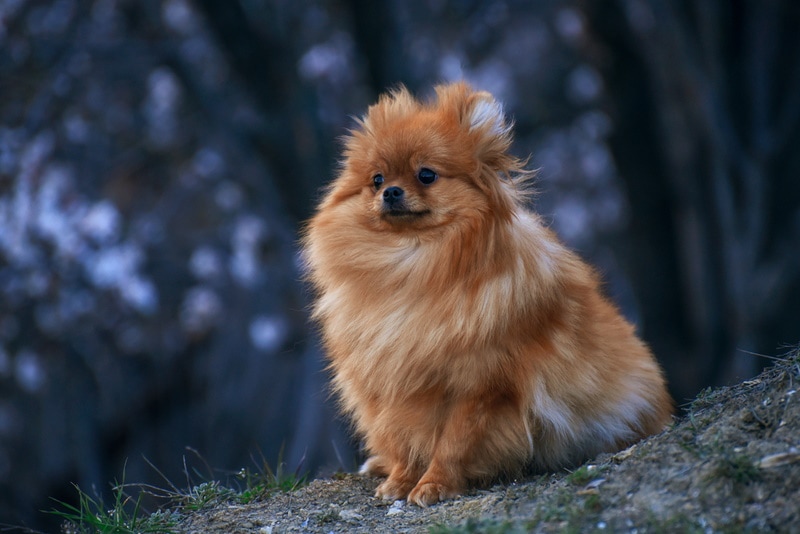
Formal Recognition of Red Pomeranians
Spitz-type dogs were first recognized by The Kennel Club in Britain in 1873 when the club was formed. The American Kennel Club first recognized Pomeranians as a breed in 1888.
The AKC breed standard describes Pomeranians as compact and short-backed with a double-coat, dense undercoat, “fox-like” expression, and medium-sized, almond-shaped eyes. The curled-over-the-back tail is described as “heavily plumed”.
Pomeranians are also described in the breed standard as weighing between 3 and 7 pounds and standing at just 6–7 inches tall at the shoulder. On the American Kennel Club’s breed popularity ranking, the Pomeranian currently sits at number 24 out of 284.
Top 3 Unique Facts About Pomeranians
1. Pomeranians Have Been the Companions of Many Famous People
Famous Pomeranian owners have included Marie Antoinette, Martin Luther, Mozart, Emile Zola, and, of course, Queen Victoria who bred Pomeranians.
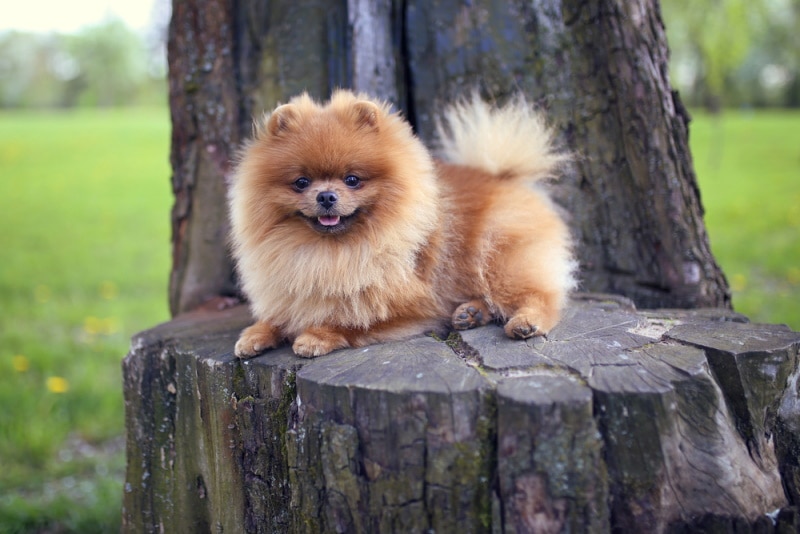
2. A Pomeranian Was at the Foot of Queen Victoria’s Deathbed
Queen Victoria’s favorite Pomeranian was called “Turi”. Turi was reportedly at the foot of the Queen’s bed at her request as she passed away on January 22, 1901.
Turi can be seen in photographs with the Queen in her royal carriage. This fact relates to Pomeranians in general rather than red Pomeranians specifically, since Turi appears to have been light in color—perhaps white or cream.
3. Michelangelo Was Accompanied by a Pomeranian While Painting the Sistine Chapel Ceiling
According to legend, while Michelangelo worked on the Sistine Chapel ceiling, his pet Pomeranian was nearby on a satin pillow.
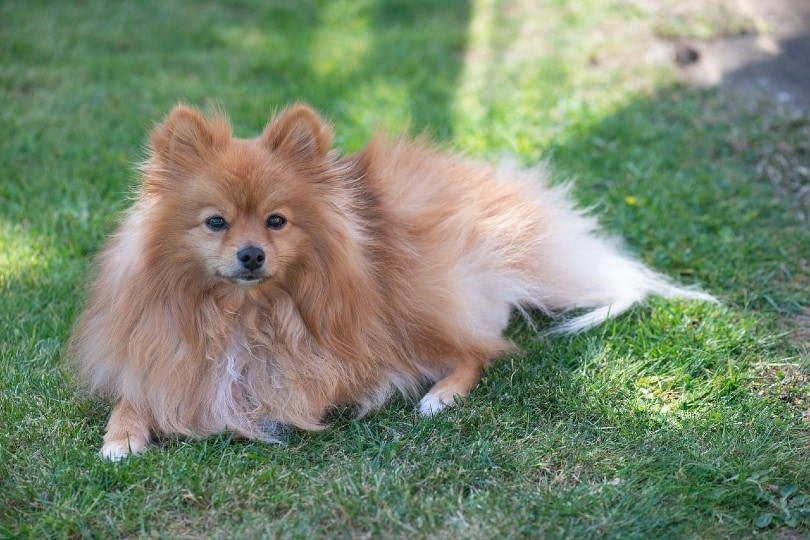
 Does a Red Pomeranian Make a Good Pet?
Does a Red Pomeranian Make a Good Pet?
The Pomeranian is a dog that, despite its tiny body, has a larger-than-life personality. These aren’t the kind of dogs to blend into the background—they want to be seen and, in some cases, heard!
Just a heads up that these dogs are prone to barking quite a bit, and you can minimize the risk of nuisance barking by making sure your Pomeranian is mentally stimulated and gets daily exercise. These clever little dogs enjoy both physically and mentally stimulating activities like agility work, obedience training, playing with various kinds of toys, and learning tricks.
A Pomeranian would be best suited to a family that shows lots of affection (expect to receive it back tenfold) and that has children who know how to be gentle and respectful with this spunky but sensitive dog. Poms are playful and energetic but be careful not to let children or other dogs play too rough with a Pom as this can be too much for their small frame.
Summary
When you glimpse one of these little fluffballs on legs, it can be hard to imagine that Pomeranians descend from much larger and stronger dogs that were bred for work purposes.
Though their Nordic ancestors spent their time pulling sleds and guarding property, the cheerful yet regal Pomeranian has spent more time in the company of royalty. Today, they can often be found entertaining their families with their endearing boldness and spirited personalities.
Featured Image Credit: Anna Gorina, Shutterstock



